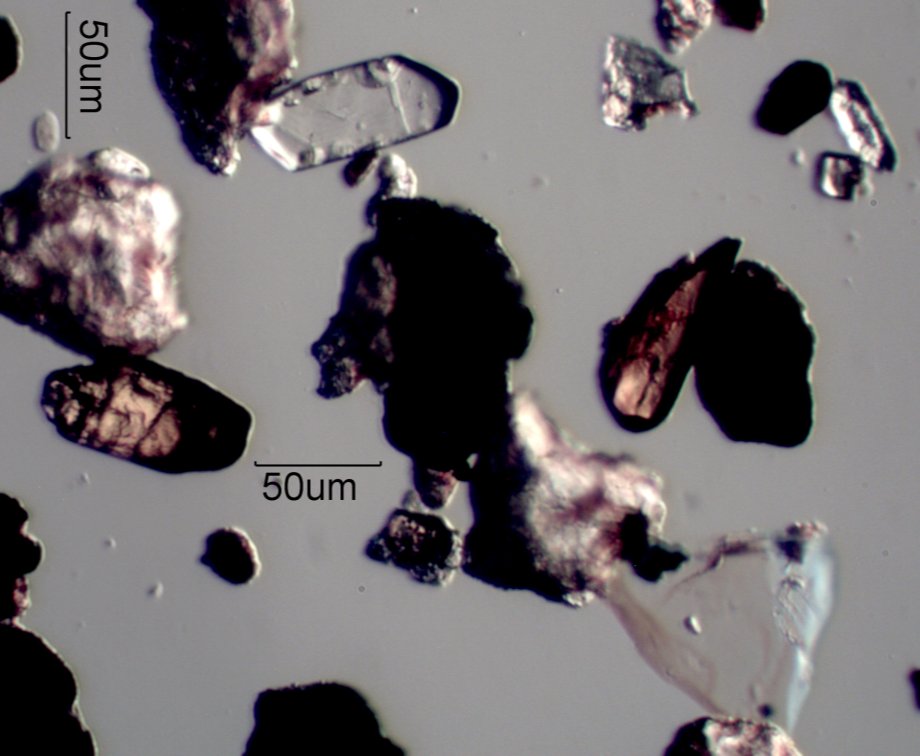Sand, Long Canyon, Arizona
These are "Heavy" minerals from the sand in the dry streambed in Long Canyon. It separated in the greater than 2.8 gram/cc fraction of the density column. These minerals are mounted in a medium with a refractive index of 1.704 (Cargile Meltmount 1.704). The two zircon prisms show high relief and the the two orange rutile crystals show even higher relief. They are shaded on the right side, which indicates higher refractive indices that the mouning medium with this form of illumination. Three of the minerals show high relief but are dark on the left side, Which indicates that their refractive indices are much lower than the mounting medium. One mineral show dispersion staining colors that indicated a refractive index slightly higher than the mounting medium, perhaps 1.71 in this orientation.
Transmitted Oblique Single Linear Polarizer
Welland, Michael, SAND: THE NEVER ENDING STORY, University of California Press, 2009.
http://www.microscopy-uk.org.uk/mag/indexmag.html?http://www.microscopy-uk.org.uk/mag/artjun01/clsand.html
(Good Information on the microscopy of sand, Great site for more information on microscopy in general)
http://www.scientificamerican.com/article.cfm?id=a-grain-of-sand-natures-secret-wonder
(Good Information on Sand with links to more information on sand)
http://www.sciencelive.org/component/option,com_mediadb/task,play/idstr,Open-feeds_fsc_exploring_sedimentary_processes_fsc02_02_m4v/vv,-2/Itemid,97
(Brief, very informative video on what can be learned from the shape of a sand grain.)
Definition/Function:
These minerals included hematite, magnetite, rutile, tourmaline, volcanic glass, and zircon, and others.
Significance in the Environment:
Characteristic Features:
Associated Particles:
References:
Greenberg, Gary, A GRAIN OF SAND: NATURE'S SECRET WONDER, Voyageur Press, 2008.Welland, Michael, SAND: THE NEVER ENDING STORY, University of California Press, 2009.
http://www.microscopy-uk.org.uk/mag/indexmag.html?http://www.microscopy-uk.org.uk/mag/artjun01/clsand.html
(Good Information on the microscopy of sand, Great site for more information on microscopy in general)
http://www.scientificamerican.com/article.cfm?id=a-grain-of-sand-natures-secret-wonder
(Good Information on Sand with links to more information on sand)
http://www.sciencelive.org/component/option,com_mediadb/task,play/idstr,Open-feeds_fsc_exploring_sedimentary_processes_fsc02_02_m4v/vv,-2/Itemid,97
(Brief, very informative video on what can be learned from the shape of a sand grain.)


